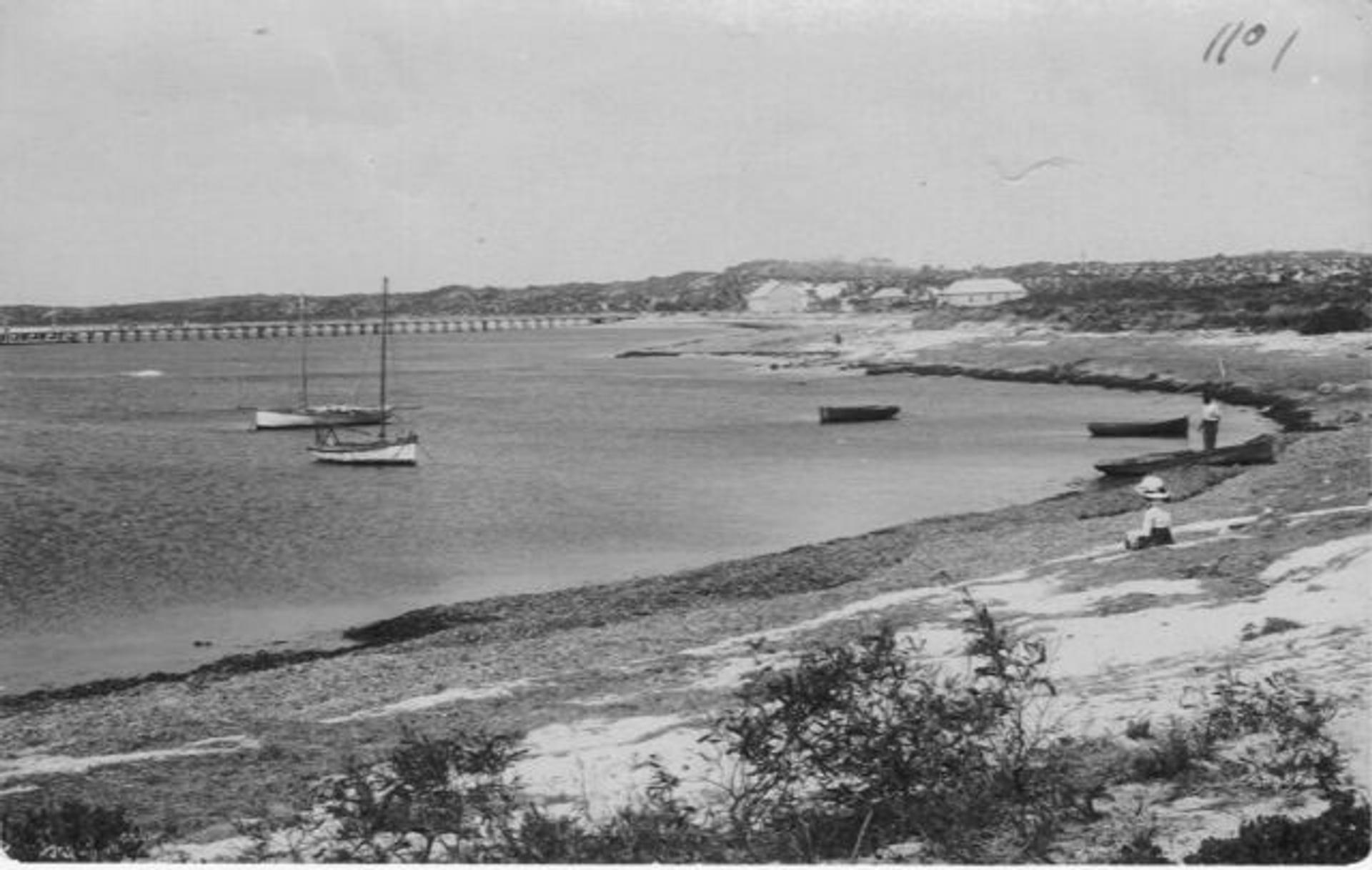Edward Tuckett
Vessel Name: Electra
Edward Tuckett
Drowned; body never recovered
10 May 1890

Port Irwin
The ketch Electra was built in Fremantle in 1883 for John Bateman Snr, a wealthy ship owner of Fremantle. She was a jarrah boat, 24 metres [78.7 feet] in length, 6 metres [19.9 feet] across her beam and drew 2.3 metres [7.5 feet] of water. She weighed 91.6 tonnes and could carry 84.81 tonnes under-deck. She had two masts, a single deck, counter stern and billet head. Her official number was 75317.
Electra was built for hard work at a time when pearling settlements along the coast needed so much cargo, and Western Australia was supplying its own farms, and farms across the world with ever-increasing amounts of guano, found on the islands off the coast.
Electra was sold to Francis Perrier Bell, another Fremantle ship owner in 1898. She was mortgaged back to John Bateman for £300 and 8% interest. After only one month the loan was cleared, and ownership reverted to John Bateman. This use of marine as mediums of finance exchange was commonplace in the 1800s when so many vessels were being built, bought and sold.
In August 1899 Electra was sold to Alexander Gordon, a Broome accountant. In October 1901, she was sold to a consortium of Fremantle merchants and shipping agents including John Denny, James Leslie Denny, Robert John and Robert John Lynne. Despite changing hands multiple times, Electra was mostly owned by John Bateman over her working life of 20 years. She was a long-lived and hard-worked vessel.
Electra first came into the news in May 1890 when she was caught in a storm. She left Fremantle on 6 May 1890 headed for Rat Island in the Abrolhos Islands for guano under the command of Captain Dundee. The weather was deteriorating and on 10 May she put into Port Irwin [Dongarra] for shelter, anchoring in the bay at 12.30pm. To reach the Port Irwin anchorage from the south it was necessary to navigate around the reef known as Home Reef by the local fishermen.
As Electra rounded the home reef to enter the shelter of the bay, deckhand Edward Tuckett was washed overboard by the heavy sea. The crew threw a rope to him, and he was able to grab it. He could not maintain his hold and soon tired and let the rope go. In the heavy sea, The crew saw Edward go under the boat and disappear. In the storm the crew were unable to do more to help Edward and he drowned. No trace of his body was found. A search of the beach over the following days was fruitless.
Electra dragged three anchors, and at 7pm was driven ashore and left high on the beach 400 yards [365 metres] from the jetty, along with the Planet which parted her moorings and was totally wrecked. Some newspapers reported Captain Dundee had beached Electra purposefully to prevent her from breaking free and wrecking. In either story, when the storm abated the vessel was on the beach.
Initially there appeared to be little damage, but it became apparent there was damage to planks in the bottom of the hull. Repairs began, and she was refloated and sent back to work. Aside from her regular guano deliveries from Rat Island she made occasional voyages to the northwest for guano off the Lacepedes Islands and deliver supplies or cargo to Cossack on the way there.
In 1889, Electra collided with the jetty at Fremantle while fully loaded. She caused damage to Minnie, another boat tied up on the jetty. Electra was repaired again and went back to hauling guano.
In 1892 Electra was tied up at the Fremantle wharf undergoing repairs. She lurched suddenly and a German called Kormenschoss had one of his arms jammed between the covering board and a jetty pile [covering boards or coamings are raised edges on a hatch, cockpit or porthole that slope away from the opening to keep water out]. Dr White was called to attend the workman whose wrist was lacerated and the arm badly contused.
In April 1894, Electra carried the railway iron and fastenings for the Mullewa Railway on her way back from taking guano to Fremantle. Vessels on regular runs were used to carry all manner of cargo on their return voyages to maximise their use and increase the profits for their owners.
By 1898 Electra was 15 years old, and like all hard-working, high-earning boats she was tiring. She was put to work lightering in the Cossack area where the harbour was less than ideal and ships and large boats were loaded by lighter. [Lighters were crucial to working ports. They were small boats that could work inside the harbour, get to nearby pearling grounds, travel up rivers and creeks and negotiate the heavy marine traffic to load/unload boats]. The lay-up camps needed supplies. [Lay-up camps were camps used by crews when they were not working, usually upriver safe from cyclonic winds and tides. The camps were also used for boat repairs and careening]. Luggers and camps needed firewood and fresh water. Mail needed to come and go, and so did crews, boat owners and pearl buyers.
Electra worked in the busy Cossack pearling grounds for a further six years, lightering for the pearl boats and crews, and fetching supplies from the south when required. She ended her days on 18 March 1904, 730 metres [800 yards] from shore at Bunker Bay while under the command of Captain John Anderson with a crew of five. She was voyaging from Hamelin Bay to Fremantle at the time carrying timber for Millars in Fremantle and cargo for John Bateman Jnr. She sprang a leak which was too serious for the crew and pumps to control. The crew safely abandoned ship three minutes before she sank. Electra was still valued at £1000. The inquiry on 21 March 1904 before A R Price, Sub-collector of Customs and E Cross, J.P. resulted in no adverse findings against the captain or crew.
For a second tragedy while in Cossack, read the story of William [Bill] Brooker.
